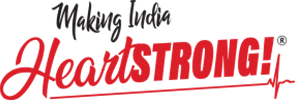


Are you aware of how hypertension affects the risk of stroke? Do you know the signs to watch for and how this silent but serious health issue can be effectively managed?
Hypertension, commonly known as high blood pressure, is a potent risk factor for stroke, a significant cause of worrying health complications worldwide. It quietly damages blood vessels over time, setting the stage for potentially life-threatening ‘cerebrovascular’ events (that affect both the brain and heart).
Understanding the intricate relationship between elevated blood pressure levels and stroke is essential for both prevention and management. This blog post explores this critical health issue, shedding light on how elevated blood pressure can lead to strokes, the warning signs to be mindful of, and practical strategies for prevention and management.
By increasing awareness and knowledge, we can empower ourselves to take proactive steps toward heart and brain health, potentially saving lives and enhancing the quality of life for many.
Hypertension is often called a ‘silent killer’ because, without conspicuous symptoms, it damages blood vessels, leading to their narrowing and hardening. This arterial damage significantly elevates the risk of stroke, a critical condition where the brain’s blood supply is interrupted.
According to neurologist Robert D. Brown, Jr. M.D., M.P.H., writing on the Mayo Clinic website, a stroke occurs when the blood supply to part of the brain is interrupted or reduced, preventing brain tissue from getting oxygen and nutrients. Strokes can lead to lasting brain damage, disability, or even death. Quick treatment is crucial and can minimize brain damage and potential complications.
Ischemic strokes, which are the most prevalent, occur when a blood clot obstructs a brain vessel, often as a result of the arterial damage caused by elevated blood pressure. On the other hand, hemorrhagic strokes result from the rupture of weakened vessels, a complication of prolonged high blood pressure.
Managing blood pressure is critical to mitigating stroke risk. Regular monitoring, disciplined routines, and taking prescribed medicines on time play vital roles in maintaining healthy blood pressure levels.
Recognizing the signs of a stroke can indeed be life-saving. According to the American Stroke Association, the ‘FAST’ acronym is a helpful tool for remembering these critical symptoms: Face drooping, Arm weakness, Speech difficulties, and Time to call emergency services.
These symptoms usually appear suddenly and demand immediate medical attention. Additional warning signs may include sudden confusion, trouble seeing in one or both eyes, difficulty walking or maintaining balance, dizziness, or an unexpected severe headache.
The manifestation of stroke symptoms depends on the affected area of the brain, and quick recognition of these signs is crucial for timely and effective treatment. Immediate medical intervention is vital to minimize brain damage and maximize the likelihood of a successful recovery.
Individuals with hypertension problems need to be especially vigilant, as their risk of experiencing a stroke is considerably higher. Understanding and promptly responding to these symptoms can make a critical difference in outcomes for those suffering a stroke.
Understanding the role of family history is critical in assessing and managing the risks of both hypertension and stroke. Genetics can significantly influence an individual’s susceptibility to raised blood pressure. Those with such an ancestral history often face a higher likelihood of developing the condition themselves.
According to Amelia K. Boehme, Ph.D. et al., writing in Circulation Research, a family pattern of stroke can elevate an individual’s risk. This genetic predisposition can also affect how one’s body responds to certain medications and daily regimen adjustments. Knowing and discussing one’s family medical history with a doctor is vital.
After evaluating these factors, doctors can tailor prevention and treatment strategies more effectively. For example, individuals with generations passing down the ailments might need more frequent monitoring or a different medication approach. Proactive engagement in understanding the family medical tree equips individuals with essential information to take targeted actions for management and prevention.

For numerous individuals battling blood pressure problems, altering daily living patterns alone may not be enough to bring the situation down to the desired levels. In these instances, the role of prescribed medicines becomes indispensable.
According to the American Heart Association (AHA), various antihypertensive drugs are available, including ACE inhibitors, beta-blockers, diuretics, and calcium channel blockers. Selecting a specific combination depends on the doctor assessing several factors: the individual’s overall health, the severity of their condition, and any concurrent health issues.
Adhering to the prescription is crucial for adequate blood pressure control. Patients must communicate openly with their doctors, working together to determine the most suitable treatment and dosage.
Realizing the potential side effects of these medications is also important. Regular follow-ups and blood pressure monitoring ensure that the treatment remains effective and adjustments are made as needed, thereby optimizing control and reducing the risk of complications.
According to Marco Gonzalez, MD, writing in Nebraska Medicine, effectively managing hypertension and subsequent stroke necessitates certain simple steps.
Consistently implementing these good practices does more than help control blood pressure. It also enhances overall cardiovascular health, substantially reducing stroke risk.
These should be viewed as long-term commitments rather than short-term fixes, forming an integral part of a healthier way forward.

Being proactive in heart care is undoubtedly very valuable, especially when there is a likelihood of chronic health situations that can exacerbate high blood pressure and stroke.
The presence of a combination of conditions such as obesity, cholesterol, diabetes, and hypertension – along with other hereditary factors – can all have a multiplicative impact on the heart.
That’s why regular check-ups with the doctor are all the more crucial. The doctor can offer advice and screening based on various personalized factors. As the adage goes, “An ounce of prevention is better than a pound of cure.”
Uncontrolled blood pressure is a significant risk factor for stroke, but with the proper knowledge and behavior, its impact can be mitigated. Recognizing the signs of stroke, exercising control for lowering blood pressure, adhering to doctor’s orders, and regular health monitoring are the four indispensable steps in managing and reducing risks.
The power to prevent and protect yourself from stroke, with all the adequate professional guidance you can get, lies in absorbing advice and taking action. Self-care is a precious gift you can give yourself. Stay heart-healthy.